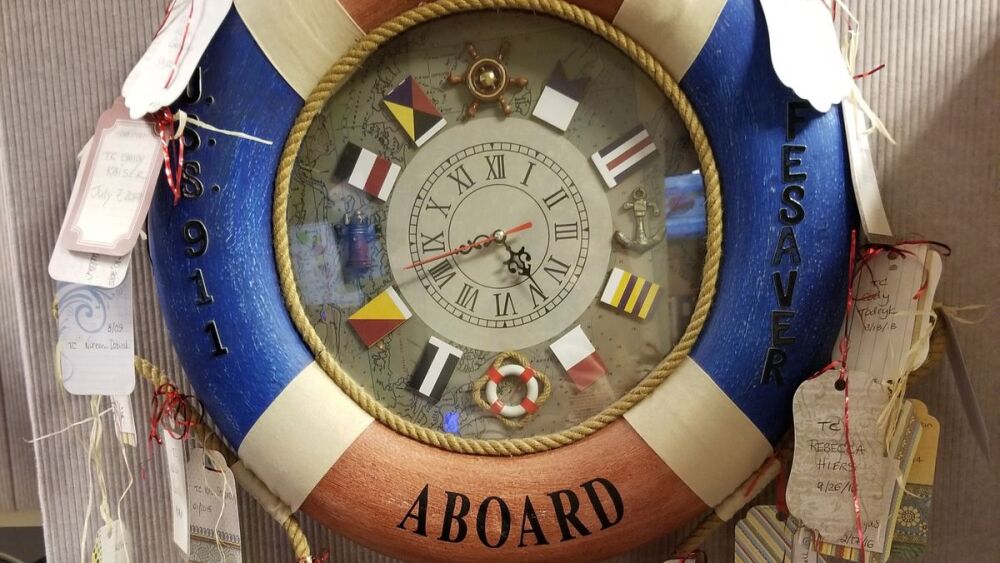Communication centers, generally speaking, are not welcoming spaces. The dispatchers spending their time in these centers choreograph multiple agencies’ activities while gathering information from callers and keeping them calm. Communication centers are often dark, windowless, basement fortresses where the staff are essentially isolated from the rest of the world; safe from disaster, disruption and natural light.
Sergeant CayeLynn Duchow has spent more than two decades in the Outagamie County Communications Center, and she has made it her mission to make it feel like home for staff. About 12 years ago, Duchow took a trip to Hobby Lobby to stroll the aisles. During that trip, she stumbled on a clock that looked like a lifesaver ring and suddenly had an idea.
She took that ring home and added letters to spell USS 911 down one side and Lifesaver down the other, formulated her plan and prepared to present it to her administration.
The idea was to hang the USS 911 Lifesaver in the communication center, and each time a dispatcher had a life-saving event, she would add a luggage tag to recognize their role in that patient’s survival. The lifesaver ring serves as a visual reminder of the purposeful work the dispatchers do day in and day out – the work for which they are so rarely recognized.
Lifesaver criteria include:
- CPR instructions with ROSC obtained in field
- Heimlich instructions
- EpiPen instructions
Cultivating relationships with partner organizations
“When I was just starting out, I had the opportunity to meet someone whose life I impacted by giving CPR instructions over the phone,” Duchow said. “I took that call in my first year on the job, and as a surprise, my husband invited the man and his wife to my off-probation party – my husband actually worked with the wife, which was a total surprise to me. I was so shocked – I cried, of course – and that experience stuck with me. It is something I wish more dispatchers could experience.”
Growing a recognition program like this takes more than just putting a sign or, in this case, a lifesaver ring on a wall. Duchow had to cultivate relationships and build trust with partner agencies, such as Gold Cross Ambulance Service, Inc., the primary 911 provider in the area, and hospitals. Those relationships allow the exchange of information, follow-up communication and collaboration that makes programs like this a success.
Kati Stahmann, a 14-year veteran of the communication center, had the opportunity to meet one of the people whose life she helped to save by giving the patient’s wife CPR instructions over the phone. Stahmann was recognized in front of family, friends and strangers as she shook hands and exchanged hugs with the couple. This experience left a lasting impression on Stahmann, but also gave her family a better understanding of the work she loves.
“Our job is so overwhelmingly negative – nobody ever calls us to say they’re having a good day,” Stahmann said. “We don’t have windows, we work long hours and spend a lot of time away from our families. They don’t always understand why we come home stressed, and tired. It’s nice to have opportunities to meet the individuals you impact and a visual display representing something so positive.”
When Duchow put action to her idea, she hoped other agencies would adopt similar programs and the role of 911 dispatchers in the chain of survival would be recognized. Most do not pay mind to 911 centers – they simply trust someone will answer when they enter those three numbers in their phone and hit send.
This article was originally posted Nov. 29, 2018. It has been updated.














